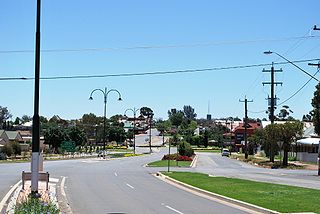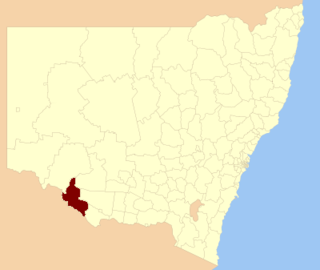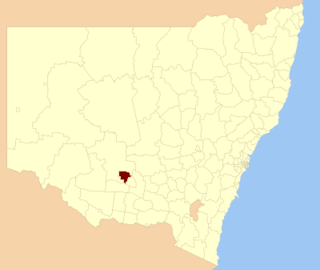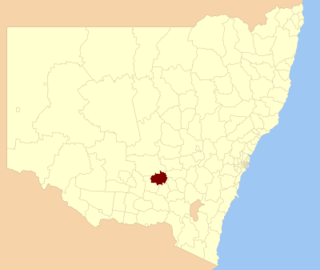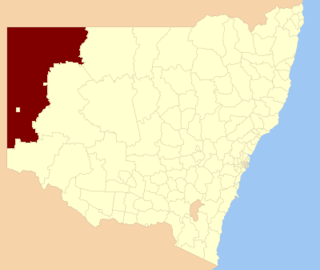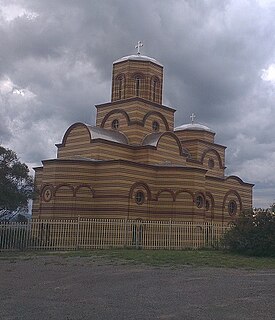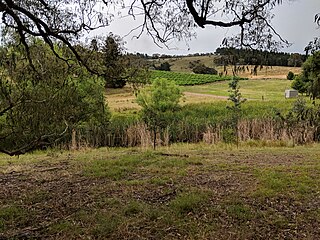| Mirrool Parish New South Wales | |||||||||
|---|---|---|---|---|---|---|---|---|---|
 Sturt County NSW as shown on John Sands 1886 map) [1] | |||||||||
| Coordinates | 34°17′24″S146°2′24″E / 34.29000°S 146.04000°E Coordinates: 34°17′24″S146°2′24″E / 34.29000°S 146.04000°E | ||||||||
| Population | 25,000-30,000 In Griffith City (2015) [2] | ||||||||
| Postcode(s) | 2680 | ||||||||
| Elevation | 129.2 m (424 ft) | ||||||||
| Time zone | AEST (UTC+10) | ||||||||
| • Summer (DST) | AEDT (UTC+11) | ||||||||
| Location |
| ||||||||
| LGA(s) | City of Griffith | ||||||||
| County | Sturt | ||||||||
| State electorate(s) | Murray | ||||||||
| Federal Division(s) | Farrer | ||||||||
| |||||||||
Mirrool Parish is a civil parish of Sturt County, New South Wales. [3]

In England, a civil parish is a type of administrative parish used for local government, they are a territorial designation which is the lowest tier of local government below districts and counties, or their combined form, the unitary authority. Civil parishes can trace their origin to the ancient system of ecclesiastical parishes which historically played a role in both civil and ecclesiastical administration; civil and religious parishes were formally split into two types in the 19th century and are now entirely separate. The unit was devised and rolled out across England in the 1860s.

Sturt County is one of the 141 Cadastral divisions of New South Wales. It contains the locality of Carrathool. The Murrumbidgee River is the southern boundary.
The Parish is located at 34°08′54″S and 146°02′04″E just north of the town of Griffith, New South Wales in the Riverina Region.

North is one of the four compass points or cardinal directions. It is the opposite of south and is perpendicular to east and west. North is a noun, adjective, or adverb indicating direction or geography.
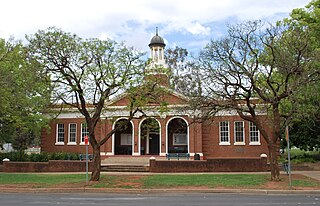
Griffith is a major regional city in the Murrumbidgee Irrigation Area that is located in the north-western part of the Riverina region of New South Wales, known commonly as the food bowl of Australia. It is also the seat of the City of Griffith local government area. Like the Australian capital, Canberra, and the nearby town of Leeton, Griffith was designed by Walter Burley Griffin and Marion Mahony Griffin. Griffith was named after Arthur Hill Griffith, the first New South Wales Minister of Public Works. Griffith was proclaimed a city in 1987, and had a population of 19,144 in 2016.

The Riverina is an agricultural region of South-Western New South Wales (NSW), Australia. The Riverina is distinguished from other Australian regions by the combination of flat plains, warm to hot climate and an ample supply of water for irrigation. This combination has allowed the Riverina to develop into one of the most productive and agriculturally diverse areas of Australia. Bordered on the south by the state of Victoria and on the east by the Great Dividing Range, the Riverina covers those areas of New South Wales in the Murray and Murrumbidgee drainage zones to their confluence in the west.
The township of Mirrool, New South Wales is 80km to the east.
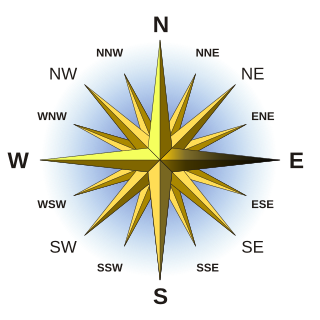
East is one of the four cardinal directions or points of the compass. It is the opposite direction from west.





